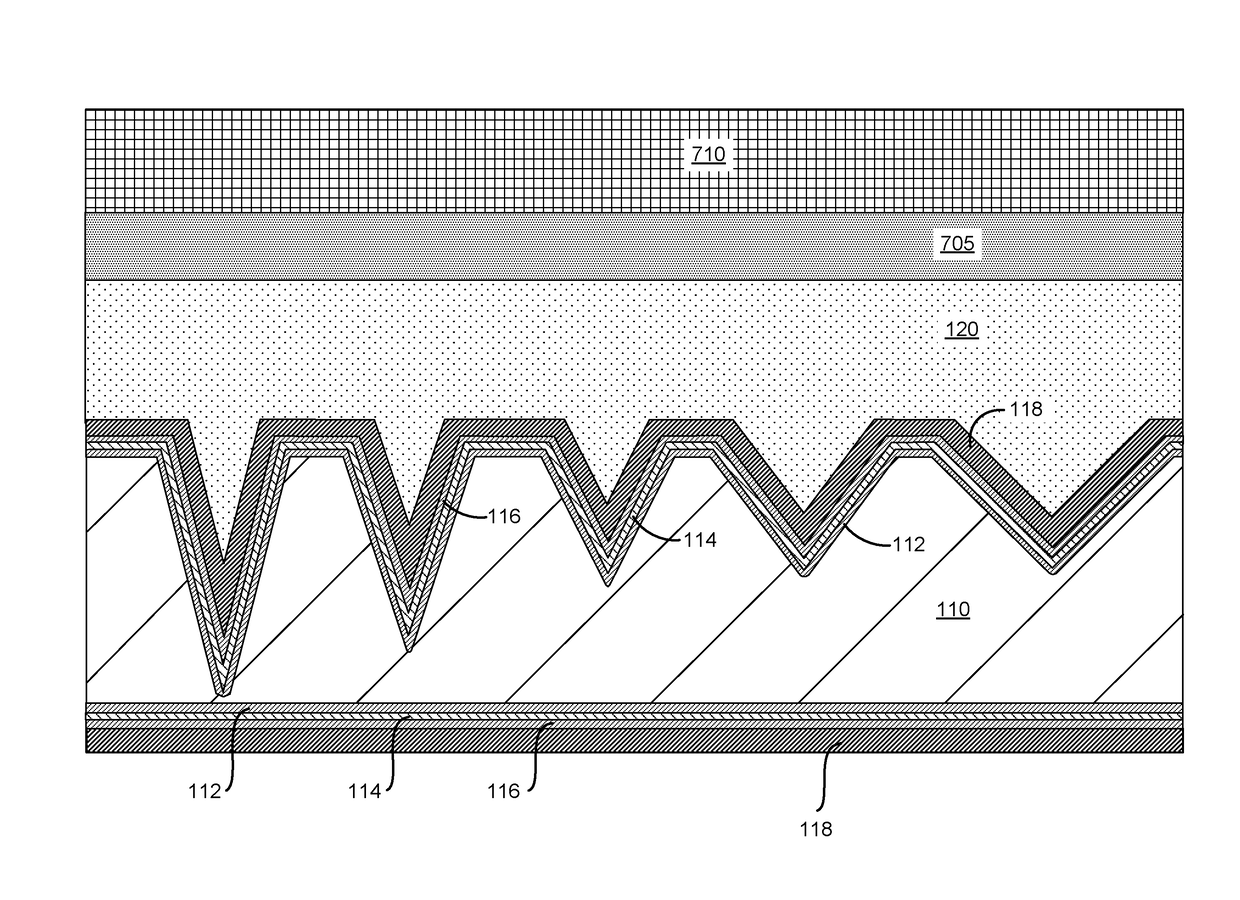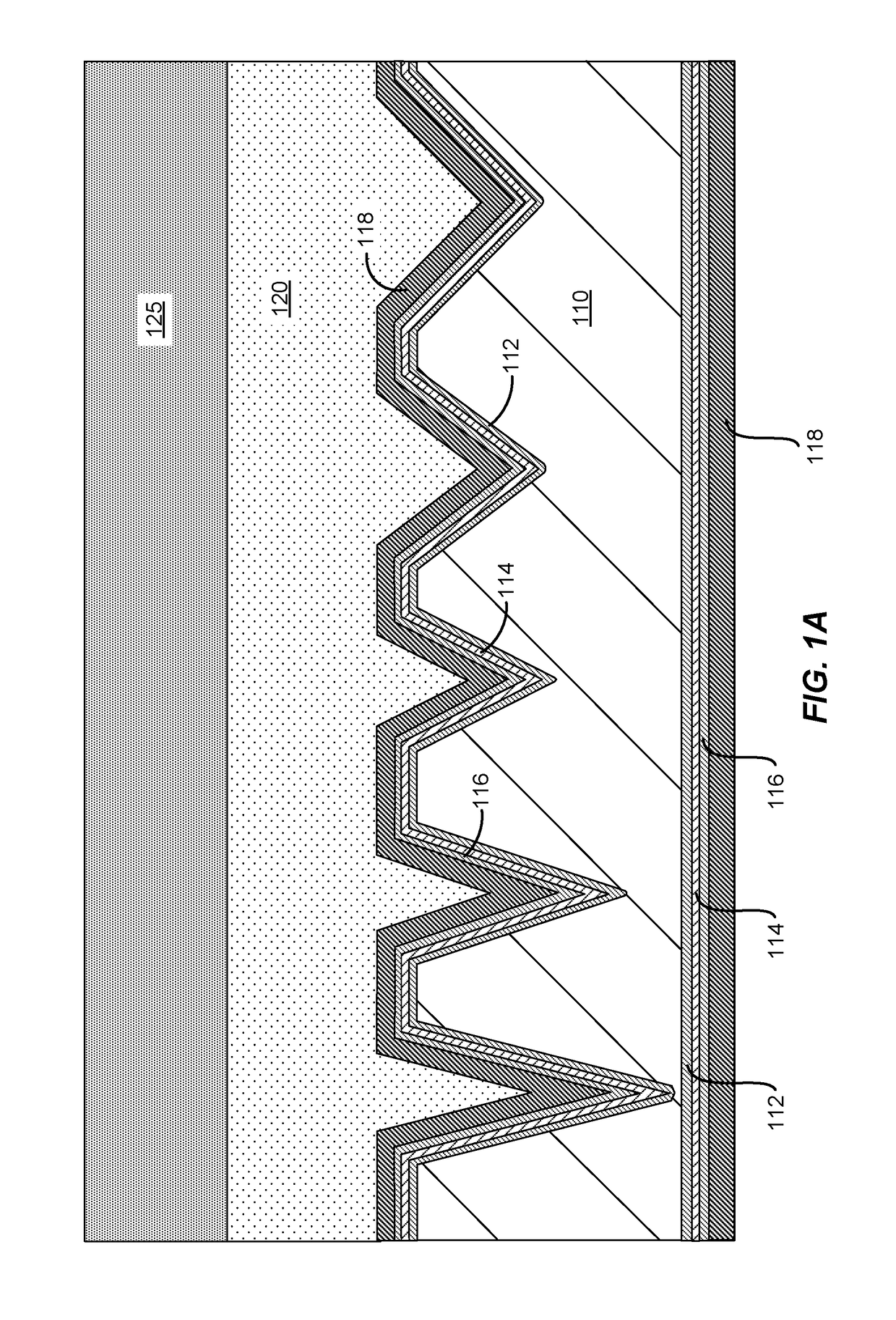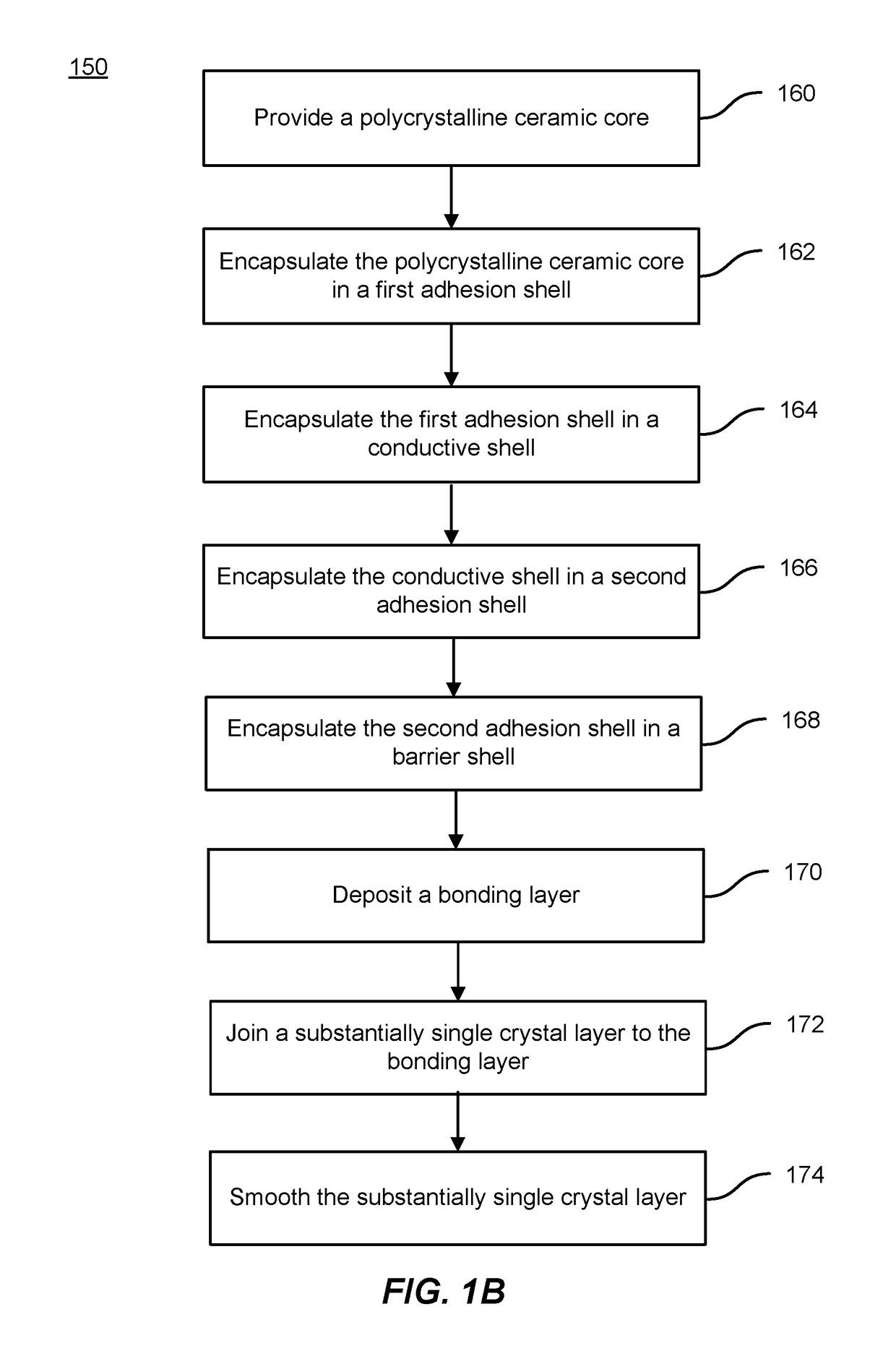Polycrystalline ceramic substrate and method of manufacture
a technology of polycrystalline ceramics and substrates, applied in the direction of polycrystalline material growth, crystal growth process, coatings, etc., can solve the problems of substrate cracking, material creep, and inability to perform additional lithographic steps necessary for device fabrication, so as to reduce stress, increase dislocation density, and improve the effect of electrical and optical properties of the epitaxial layer
- Summary
- Abstract
- Description
- Claims
- Application Information
AI Technical Summary
Benefits of technology
Problems solved by technology
Method used
Image
Examples
Embodiment Construction
[0027]Embodiments of the present invention relate to engineered substrate structures. More specifically, the present invention relates to methods and systems suitable for use in epitaxial growth processes. Merely by way of example, the invention has been applied to a method and system for providing a substrate structure suitable for epitaxial growth that is characterized by a coefficient of thermal expansion (CTE) that is substantially matched to epitaxial layers grown thereon. The methods and techniques can be applied to a variety of semiconductor processing operations.
[0028]FIG. 1A is a simplified schematic diagram illustrating an engineered substrate structure according to an embodiment of the present invention. As illustrated in FIG. 1A, the engineered substrate structure illustrated in FIG. 1A is suitable for a variety of electronic and optical applications. The engineered substrate structure includes a core 110 (e.g., AlN Substrate) that can have a coefficient of thermal expan...
PUM
| Property | Measurement | Unit |
|---|---|---|
| RMS roughness | aaaaa | aaaaa |
| RMS roughness | aaaaa | aaaaa |
| thickness | aaaaa | aaaaa |
Abstract
Description
Claims
Application Information
 Login to View More
Login to View More - R&D
- Intellectual Property
- Life Sciences
- Materials
- Tech Scout
- Unparalleled Data Quality
- Higher Quality Content
- 60% Fewer Hallucinations
Browse by: Latest US Patents, China's latest patents, Technical Efficacy Thesaurus, Application Domain, Technology Topic, Popular Technical Reports.
© 2025 PatSnap. All rights reserved.Legal|Privacy policy|Modern Slavery Act Transparency Statement|Sitemap|About US| Contact US: help@patsnap.com



